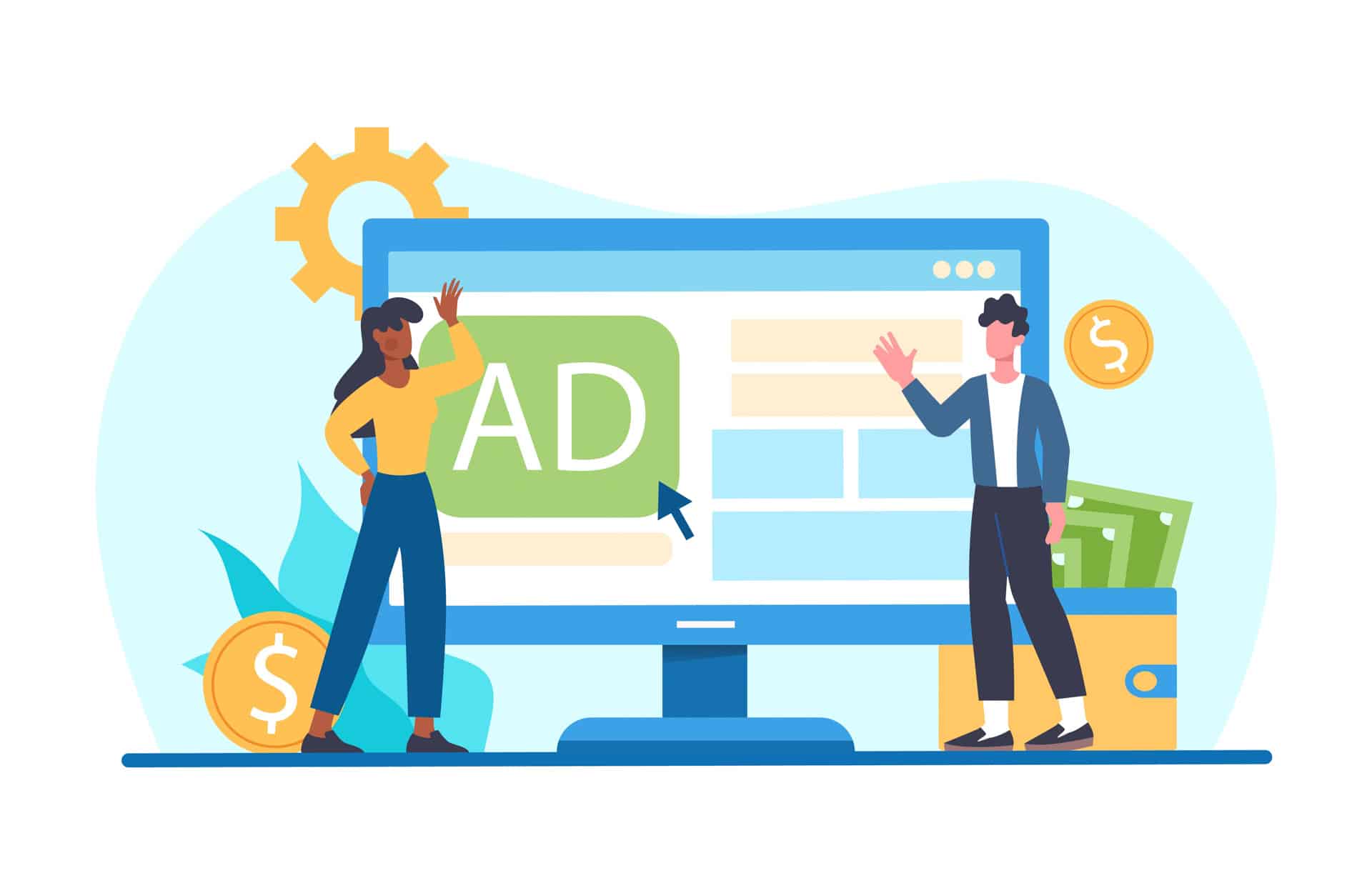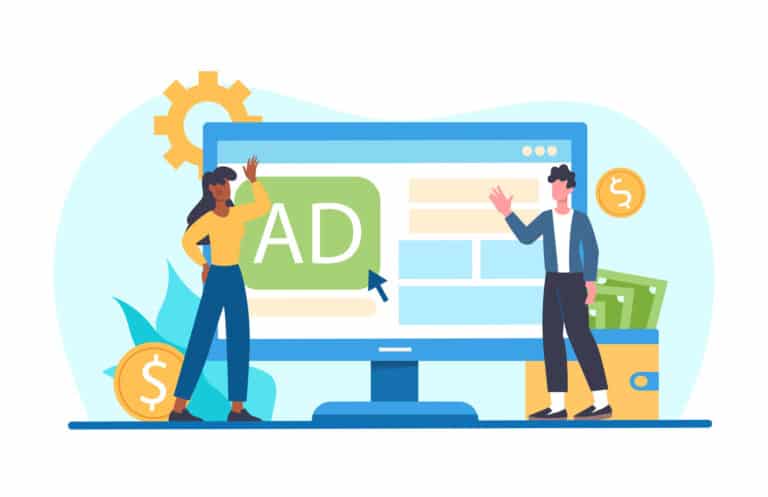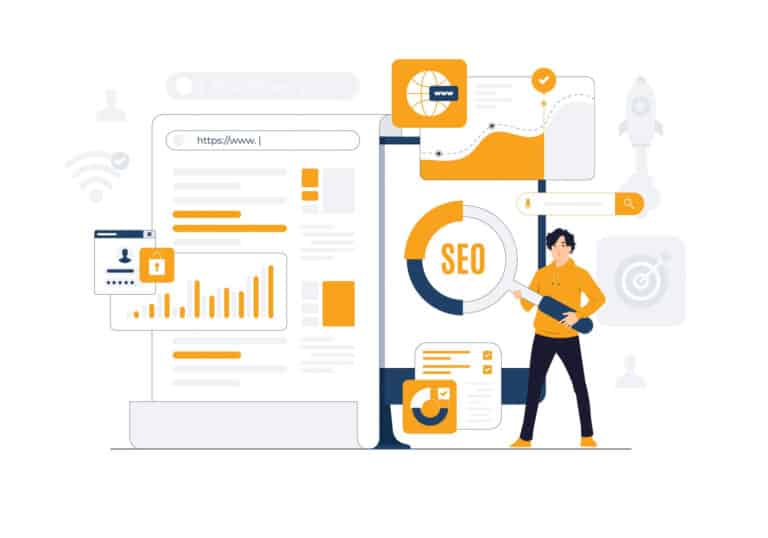January is well underway! As an influx of articles promote ‘new year, new you’ messages, have you thought about what you want to achieve this year?
Typically, New Year resolutions focus on improved health, lifestyle changes or hitting professional milestones. If you’re anything like me, these are long forgotten by February. So why not make things a little easier? Invest in your marketing knowledge, and tick one thing off that resolution list today!
Below, check out our ‘need to know’ definitive glossary of marketing acronyms to get you started on your road to becoming an industry pro!
In alphabetical order:
ASO: App Store Optimization
Optimizing your app for the ranking of apps on the App Store or Google Play. Aiming for your mobile apps to rank higher in the app store’s search results, thus becoming more visible – resulting in higher traffic and downloads.
B2B: Business-to-Business
Companies that sell to other businesses, e.g., Google.
B2C: Business-to-Consumer
Companies that sell directly to consumers, e.g., Adidas.
BR: Bounce Rate
Leading to poor conversion rates. Bounce rates may apply to:
Website bounce rate
The percentage of your website users who visit your website and leave, without clicking on anything.
Email bounce rate
The percentage of emails unable to be delivered to a recipient’s inbox. A higher bounce rate generally means your contact list needs to be updated to remove invalid email addresses. Hard bounces indicate an email is invalid for permanent reasons (incorrect email address provided). Soft bounces indicate that the recipient’s inbox may be full, so this email address can remain on your mailing list.
CMO: Chief Marketing Officer
Their role is responsible for the company’s marketing activities.
CMS: Content Management System
Software used to create, manage and edit digital content, such as a website, without the need to write code from scratch, e.g., WordPress.
COS: Content Optimization System
Ensuring content is presented in a way to reach as large an audience as possible. When writing content, ensure you have a keyword strategy in place and meta and title tags and links are added where relevant.
CPA: Cost-per-Action
An online pricing model where the advertiser pays for each specified action someone takes. For example, a click, form submission or purchase inside an app after clicking on your ad.
CPA/C/M/I: Cost per Acquisition / Cost per Customer / Cost per Thousand Impressions / Cost per Install
Measuring the cost of action via paid digital marketing, for example paid social media advertising.
Cost per acquisition: the cost of acquiring a customer.
Cost per customer: the same as CPA.
Cost per Thousand Impressions (or Cost per Mille): cost of impressions your digital content makes, per thousand impressions.
Cost per install: marketing cost for each mobile app install.
CPL: Cost per Lead
The costs for each lead you generate for sales. This will determine how cost efficient your marketing strategies are.
CR: Conversion Rate
The percentage of people who completed an action that you wanted them to – such as completing an enquiry form, downloading your app or making a booking.
Struggling to convert your lookers to bookers? Read our blog on simple tips to increase your conversion rate.
CRM: Customer Relationship Management
A strategy to improve, maintain and manage customer relationships. The software used typically bases actions off analytical insights and customer interactions, to improve communication and automate parts of the sales cycle. This software will keep track of everything companies do with their existing and potential customers – giving you a wealth of information at your fingertips.
CRO: Conversion Rate Optimisation
Increasing the percentage of conversions from each customer touchpoint. How can your website or app be improved to ensure customers actually convert?
These changes can be put to the test through A/B testing to see what works over time.
CTA: Call-to-Action
An instruction you give your customers that links them to an action you would like them to take. For example, registering for your company newsletter, downloading an app or completing a form.
Usually short and to the point, e.g.‘Buy Now’, ‘Download Here’ or ‘Sign Up’.
CTR: Click-Through Rate
The percentage of how many people advance (or click through) from one step of your marketing campaign to the next.
If they click on an ad on Google or a CTA on your newsletter, this is a click through.
CX: Customer Experience
The long-term management of customer relationships. A better CX equates to more customer retention, repeat business, and better word of mouth references.
GA: Google Analytics
Google’s free analytics platform to supply your business with detailed statistics about your website’s traffic and traffic sources, and measure on-site conversions and sales.
Need help with this? Get in touch with our expert team to review your website users and how they interact with your website.
GTM: Go to Market
A launch strategy for new businesses or products. The strategy will consider current market trends, target markets, competition and company resources.
HTML: Hyper-Text Markup Language
The standard language used to create the structure of web pages. An architecture for the page, directing the use of the website font, graphics, colors, etc.
HXC: High eXpectation Customer
A customer who can set the benchmark for your services and where to improve. If you can meet their needs, you will likely exceed the expectations of your other customers.
A great way to improve your service, offerings and an outside eye to see cracks in your business offerings – they can teach us so much!
ICA: Ideal Client Avatar
In marketing, we always reference our ‘target audience’. The ICA describes the ideal person to become your customer, such as their wants and needs, location, demographics, interests, disposable income etc.
ICA can also be referred to as a buyer persona, marketing persona, or customer profile.
IP Address: Internet Protocol Address
A unique numerical ‘address’ which identifies each device participating in a computer network.
ISP: Internet Service Provider
A company that provides internet services.
KOL: Key Opinion Leader
A person or organization with heavy influence over their followers. Perhaps an expert in their field, their opinion is respected by many. For example, Greta Thunberg.
KPI: Key Performance Indicator
A performance measurement used to determine the success of an action or strategy used by your company.
This could include app downloads, website conversion rates or followers on social media or your email list.
NPS: Net Promoter Score
A customer satisfaction metric that measures, on a scale of 0-10, the degree that respondents would recommend a company, product, or a service to others. Using a specific calculation, if regularly assessed, a company can identify if improvements are required on products or services.
NSM: North Star Metric
Originally coined by Sean Ellis, the North Star Metric provides a clear and singular benchmark to align teams to move in the same direction.
PM: Project Manager
Simply, the managers of a project. The point of contact for any issues, end results and updates for all stakeholders. Responsible for scope management and usually reporting results.
PMF: Product Market Fit
Once a gap in the market has been identified, it should be determined if there is actual market demand for your product or service.
PPC: Pay Per Click
A type of ad campaign model where the advertiser pays each time their ad is clicked, as opposed to pre-purchasing ad inventory slots. This broad category covers many paid online campaigns, including Google Ads, Programmatic Advertising, Paid Social Campaigns, and more.
Interested to discover more? Take a look at our guide, Choosing the Best PPC Ad Platforms for Your Business.
QR Code: Quick Response Barcode
Scannable barcodes that store data. In marketing, they commonly redirect someone to your website, a landing page, a voucher or similar.
Learn how to effectively use QR codes here.
QoQ: Quarter-over-Quarter
A comparison of data in the current quarter to the same data in the previous quarter.
QoQ data tends to be more unsettled than year-over-year data, but more stable than month-over-month data. However, it may not take seasonality into account.
QTD: Quarter-to-Date
The time frame starting at the beginning of the current quarter and ending at the current date.
ROI: Return on Investment
Financial benefits evaluating the efficiency and profitability of an investment you make.
For example, you set your ad budget to € 1,000, and generated € 3,000 in direct sales from the ad, the return on investment is 300%. You can calculate what a reasonable ROI for your products are based on production/supply costs, profit margins etc. As a general rule of thumb, a minimum ROI of 800% is considered good.
SaaS: Software-as-a-Service
Software offered as a subscription service and centrally hosted by another company, which stores your information and access in the cloud. Examples: HubSpot, Adobe Creative Suite, or Dropbox.
SEO: Search Engine Optimisation
A strategy to improve your website ranking in organic (unpaid) search engine results. It involves finding out which phrases – or keywords – your target audience uses when looking for your product or service and optimizing your website for those keywords.
Learn how to start your SEO journey, or why you actually need SEO for your business.
SM: Social Media
Social media platforms include Instagram, TikTok, LinkedIn, Facebook and others.
Create a social media strategy for your company to make sure you’re on the best platform for your business and building an audience.
SMM: Social Media Marketing
When social media is used to market your company to customers, potential customers and anyone else using social media.
SWOT: Strengths, Weaknesses, Opportunities, Threats
A SWOT analysis determines the strengths, weaknesses, opportunities and threats for your company.
Once complete, a strategic plan can be built to improve company success.
Examples:
Strengths: what your company does well and differentiates you from the competition.
Weaknesses: what does your company lack, such as skills or resources.
Opportunities: what will grow your company, for example expanding to new markets or product launches.
Threats: what could pose a threat to your business, such as competitors, rising prices or bad PR.
TLO: Test, Learn, Optimise
Also known as A/B testing.
Purposely creating more than one version of an item (for example an ad, webpage or newsletter) with the same main goal, but with distinct differences, to gain insight on consumer behavior.
The difference could be as simple as a color change, different graphics or use of language.
TMD: Target Market Determination
TMD describes who a product is appropriate for (target market), and any conditions around how the product can be distributed to customers.
TOV: Tone of Voice
Guidelines to determine how your business personality comes across through the words you use. Does your business write formally? Engage playfully with potential customers? Rely on puns?
We wrote a blog on the importance of this here.
UI: User Interface
Anything a customer may interact with to use a digital product or service, including a computer, website or application. The goal of effective UI is to provide a user-friendly experience with the software in an intuitive way.
UGC: User-Generated Content
Primarily used in social media, content published by an individual, usually a customer, that features your brand or company. This could be an image of your product, a testimonial, a ‘check-in’ at your company or someone using your hashtag.
USP: Unique Selling Point
What element of your company differentiates you from the rest and makes you stand out from the crowd?
It may not necessarily be a product or service, but could be your ethos, for example.
UX: User Experience
The overall experience a customer has with your business, from initial awareness through to interacting, purchase and aftersales.
VP: Value Proposition
A brief description of why consumers should choose you. Why do you exist? How are you benefiting your consumers? What is your company goal?
How can you convince consumers and stakeholders to choose you?
WOM: Word of Mouth
When your company naturally comes up in conversation, with consumers actively encouraging others in their daily interactions to consume your product or service.
And the best part – it’s free!
However, this is a double-edged sword and bad news travels fast. Do what you can to ensure your WOM stays positive.
YoY: Year-over-Year
A comparison of data in the current year to the same data in the previous year, establishing a better long-term view than MoM or QoQ.
YTD: Year-to-Date
A time frame starting at the beginning of the current year and ending at the current date.
Of course, in the world of digital, new trends are continuously emerging all the time. Subscribe to our newsletter below to be in the know!





